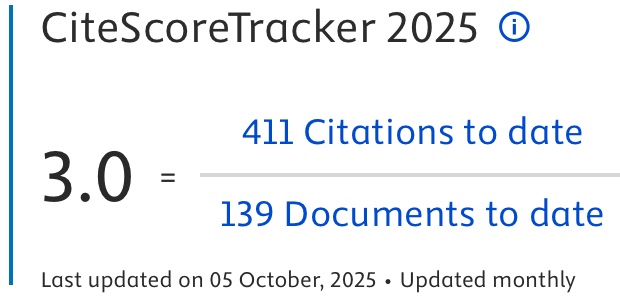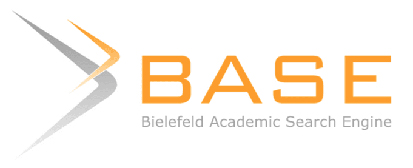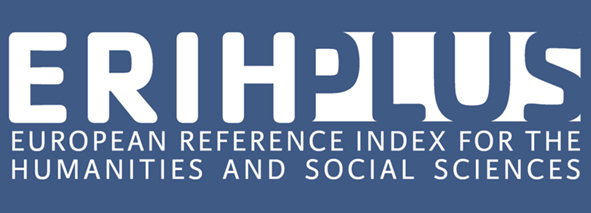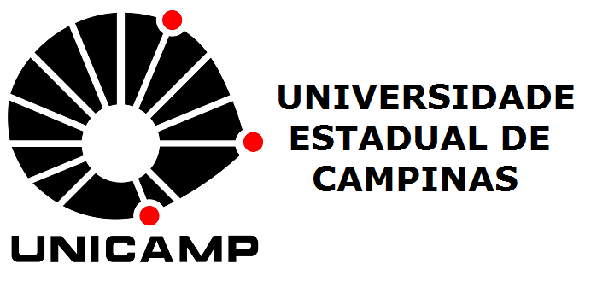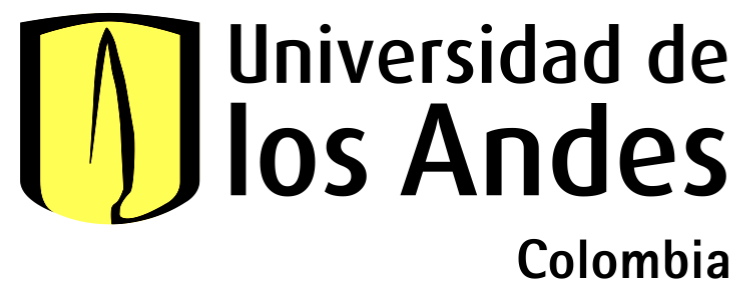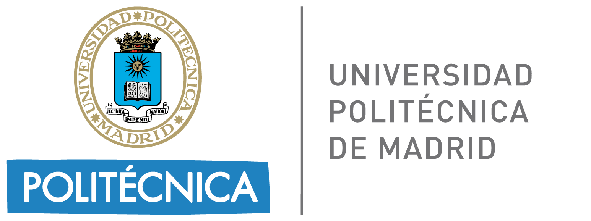Verso la Neutralità Climatica – Il ruolo chiave del Digital Twin nell’Industria 5.0
DOI:
https://doi.org/10.19229/2464-9309/15222024Parole chiave:
gemello digitale, transizione energetica, innovabilità, industria 5.0, BIMAbstract
La neutralità climatica è una sfida planetaria che richiede una rivoluzione nei modelli produttivi e nell’uso dell’energia. Il settore industriale, tra i principali responsabili delle emissioni inquinanti, necessita innovazione tecnologica per invertire questa tendenza, promuovendo soluzioni per migliorare la produzione, ridurre i consumi energetici e abbattere i costi di gestione. La transizione digitale verso l’Industria 5.0 esplora la complessità della transizione energetica e lo sviluppo di un gemello digitale, consentendo di affrontare le sfide dei cambiamenti climatici. La ricerca descrive un processo innovativo basato sulle Information Technologies e metodologie BIMtoBEM per sviluppare un gemello digitale della fabbrica con l’obiettivo di implementare sistemi di visualizzazione, cruscotti digitali e tecnologie di realtà estesa, con l’intento di porre l’essere umano al centro del flusso metodologico proposto.
Info sull'articolo
Ricevuto: 06/04/2024; Revisionato: 10/04/2024; Accettato: 18/04/2024
Downloads
##plugins.generic.articleMetricsGraph.articlePageHeading##
Riferimenti bibliografici
Bastos Porsani, G., Del Valle de Lersundi, K., Sánchez-Ostiz Gutiérrez, A. and Fernández Bandera, C. (2021), “Interoperability between Building Information Modelling (BIM) and Building Energy Model (BEM)”, in Applied Sciences, vol. 11, issue 5, article 2167, pp. 1-20. [Online] Available at: doi.org/10.3390/app11052167 [Accessed 24 March 2024].
Boje, C., Hahn Menacho, Á. J., Marvuglia, A., Benetto, E., Kubicki, S., Schaubroeck, T. and Navarrete Gutiérrez, T. (2023), “A framework using BIM and digital twins in facilitating LCSA for buildings”, in Journal of Building Engineering, vol. 76, article 107232, pp. 1-21. [Online] Available at: doi.org/10.1016/j.jobe.2023.107232 [Accessed 24 March 2024].
Cárdenas-Robledo, L. A., Hernández-Uribe, Ó., Reta, C. and Cantoral-Ceballos, J. A. (2022), “Extended reality applications in industry 4.0 – A systematic literature review”, in Telematics and Informatics, vol. 73, article 101863, pp. 1-39. [Online] Available at: doi.org/10.1016/j.tele.2022.101863 [Accessed 24 March 2024].
Chong, A., Gu, Y. and Jia, H. (2021), “Calibrating building energy simulation models – A review of the basics to guide future work”, in Energy and Buildings, vol. 253, article 111533, pp. 1-21. [Online] Available at: doi.org/10.1016/j.enbuild.2021.111533 [Accessed 24 March 2024].
De Luca, D., Dettori, M., Del Giudice, M. and Osello, A. (2021), “Connected BIM Models Towards Industry 4.0”, in Del Giudice, M. and Osello, A. (eds), Handbook of Research on Developing Smart Cities Based on Digital Twins, IGI Global, pp. 219-242. [Online] Available at: doi.org/10.4018/978-1-7998-7091-3.ch011 [Accessed 24 March 2024].
Dejaco, M. C., Scanagatta, C., Mannino, A. and Condotta, M. (2022), “Transizione digitale per il facility management – BIM, CMMS e manutenzione predittiva | Digital transition in facility management – BIM, CMMS and diagnostic maintenance”, in Agathón | International Journal of Architecture Art and Design, vol. 12, pp. 168-177. [Online] Available at: doi.org/10.19229/2464-9309/12152022 [Accessed 24 March 2024].
Del Giudice, M., Dettori, M., Magnano, S. and Osello, A. (2021), “A BIM to BEM approach for data exchange: advantages and weaknesses for industrial buildings energy assessment”, in Semenov, V. and Scherer, R. J. (eds), ECPPM 2021 – eWork and eBusiness in Architecture, Engineering and Construction – Proceedings of the 13th European Conference on Product and Process Modeling, 15-17 September 2021, Moscow, CRC Press, pp. 98-105. [Online] Available at: doi.org/10.1201/9781003191476 [Accessed 24 March 2024].
Di Biccari, C., Calcerano, F., D’Uffizi, F., Esposito, A., Campari, M. and Gigliarelli, E. (2022), “Building information modeling and building performance simulation interoperability – State-of-the-art and trends in current literature”, in Advanced Engineering Informatics, vol. 54, article 101753, pp. 1-20. [Online] Available at: doi.org/10.1016/j.aei.2022.101753 [Accessed 24 March 2024].
European Commission (2019), Communication from the Commission to the European Parliament, the European Council, the Council, the European Economic and Social Committee and the Committee of the Regions – The European Green Deal, document 52019DC0640, 640 final. [Online] Available at: eur-lex.europa.eu/legal-content/EN/TXT/?uri=COM%3A2019%3A640%3AFIN [Accessed 24 March 2024].
Facciolongo, A. (2018), Paesaggi e Marginalità – Etica ed Estetica del Terzo Paesaggio, Mimesis, Milano-Udine.
Fatta, F. (2020), “Le molte dimensioni del modello digitale | The many dimensions of the digital model”, in Agathón | International Journal of Architecture Art and Design, vol. 7, pp. 16-25. [Online] Available at: doi.org/10.19229/2464-9309/722020 [Accessed 24 March 2024].
Ghenai, C., Alhaj Husein, L., Al Nahlawi, M., Hamid, A. K. and Bettayeb, M. (2022), “Recent trends of digital twin technologies in the energy sector – A comprehensive review”, in Sustainable Energy Technologies and Assessments, vol. 54, article 102837, pp. 1-17. [Online] Available at: doi.org/10.1016/j.seta.2022.102837 [Accessed 24 March 2024].
Giallocosta, G. (2019), “Caratteri e criticità di innovazione di processo | Features and critical issues of process innovations”, in Agathón | International Journal of Architecture, Art and Design, vol. 5, pp. 5-10. [Online] Available at: doi.org/10.19229/2464-9309/512019 [Accessed 24 March 2024].
Hang, L. and Jiansong, Z. (2023), “Improving IFC-Based Interoperability between BIM and BEM Using Invariant Signatures of HVAC Objects”, in Journal of Computing in Civil Engineering, vol. 37, issue 2, article 04022059, pp. 1-20. [Online] Available at: doi.org/10.1061/(ASCE)CP.1943-5487.0001063 [Accessed 24 March 2024].
Huang, S., Wang, B., Li, X., Zheng, P., Mourtzis, D. and Wang, L. (2022), “Industry 5.0 and Society 5.0 – Comparison, complementation and co-evolution”, in Journal of Manufacturing Systems, vol. 64, pp. 424-428. [Online] Available at: doi.org/10.1016/j.jmsy.2022.07.010 [Accessed 24 March 2024].
Jung, D. E., Kim, S., Han, S., Yoo, S., Jeong, H., Lee, K. H. and Kim, J. (2023), “Appropriate level of development of in-situ building information modeling for existing building energy modeling implementation”, in Journal of Building Engineering, vol. 69, article 106233, pp. 1-14. [Online] Available at: doi.org/10.1016/j.jobe.2023.106233 [Accessed 24 March 2024].
Lauria, M. and Azzalin, M. (2021), “Paradigmi | Paradigms”, in Agathón | International Journal of Architecture Art and Design, vol. 9, pp. 12-21. [Online] Available at: doi.org/10.19229/2464-9309/912021 [Accessed 24 March 2024].
Lv, Z. (2023), “Digital Twins in Industry 5.0”, in Research, vol. 6, article 0071, pp. 1-17. [Online] Available at: spj.science.org/doi/abs/10.34133/research.0071 [Accessed 24 March 2024].
Ma, J., Yang, L., Wang, D., Li, Y., Xie, Z., Lv, H. and Woo, D. (2024), “Digitalization in response to carbon neutrality – Mechanisms, effects and prospects”, in Renewable and Sustainable Energy Reviews, vol. 191, article 114138, pp. 1-24. [Online] Available at: doi.org/10.1016/j.rser.2023.114138 [Accessed 24 March 2024].
Maiezza, P. (2019), “As-built reliability in architectural HBIM modeling”, in The International Archives of the Photogrammetry, Remote Sensing and Spatial Information Sciences, vol. XLII-2/W9, pp. 461-466. [Online] Available at: doi.org/10.5194/isprs-archives-XLII-2-W9-461-2019 [Accessed 24 March 2024].
Massafra, A., Predari, G. and Gulli, R. (2022), “Towards digital twin driven cultural heritage management – A HBIM-based workflow for energy improvement of modern buildings”, in The International Archives of the Photogrammetry, Remote Sensing and Spatial Information Sciences, vol. XLVI-5/W1-2022, pp. 149-157. [Online] Available at: doi.org/10.5194/isprs-archives-XLVI-5-W1-2022-149-2022 [Accessed 24 March 2024].
Massari, G. A., Barbini, A., Bernardini, E. and Roman, O. (2022), “Riqualificazione energetica dell’edilizia esistente – Modellazione e gestione geometrico-informativa | Energy retrofitting of existing buildings – Geometric-informative modelling and management”, in Agathón | International Journal of Architecture Art and Design, vol. 12, pp. 146-157. [Online] Available at: doi.org/10.19229/2464-9309/12132022 [Accessed 24 March 2024].
Moradi, A., Kavgic, M., Costanzo, V. and Evola, G. (2023), “Impact of typical and actual weather years on the energy simulation of buildings with different construction features and under different climates”, in Energy, vol. 270, article 126875, pp. 1-13. [Online] Available at: doi.org/10.1016/j.energy.2023.126875 [Accessed 24 March 2024].
Namjoshi, J. and Rawat, M. (2022), “Role of smart manufacturing in industry 4.0”, in Materials Today | Proceedings, vol. 63, pp. 475-478. [Online] Available at: doi.org/10.1016/j.matpr.2022.03.620 [Accessed 24 March 2024].
Paciotti, D. and Di Stefano, A. (2021), “Design generativo e prodotto industriale – Connettere la dimensione fisica/digitale del progetto | Generative design and industrial product – Connecting physical/digital dimensions of the project”, in Agathón | International Journal of Architecture Art and Design, vol. 10, pp. 158-167. [Online] Available at: doi.org/10.19229/2464-9309/10142021 [Accessed 24 March 2024].
Pan, Y., Zhu, M., Lv, Y., Yang, Y., Liang, Y., Yin, R., Yang, Y., Jia, X., Wang, X., Zeng, F., Huang, S., Hou, D., Xu, L., Yin, R. and Yuan, X. (2023), “Building energy simulation and its application for building performance optimization – A review of methods, tools, and case studies”, in Advances in Applied Energy, vol. 10, article 100135, pp. 1-24. [Online] Available at: doi.org/10.1016/j.adapen.2023.100135 [Accessed 24 March 2024].
Ramaji, I. J., Messner, J. I. and Mostavi, E. (2020), “IFC-Based BIM-to-BEM Model Transformation”, in Journal of Computing in Civil Engineering, vol. 34, issue 3, pp. 1-13. [Online] Available at: doi.org/10.1061/(ASCE)CP.1943-5487.0000880 [Accessed 24 March 2024].
Ratti, C. and Belleri, D. (2020), “Verso una cyber-ecologia | Towards a cyber ecology”, in Agathón | International Journal of Architecture, Art and Design, vol. 8, pp. 8-19. [Online] Available at: doi.org/10.19229/2464-9309/812020 [Accessed 24 March 2024].
Romano, R., Belardi, E., Gallo, P. and Distefano, D. L. (2022), “Sistemi costruttivi low-tech 4.0 – Innovazione di prodotto-processo BIM-based per la prefabbricazione in cartone ondulato | 4.0 low-tech building systems – BIM-based product-process innovation for corrugated cardboard prefabrication”, in Agathón | International Journal of Architecture Art and Design, vol. 12, pp. 158-167. [Online] Available at: doi.org/10.19229/2464-9309/12142022 [Accessed 24 March 2024].
Russo Ermolli, S. and Galluccio, G. (2019), “Industrializzazione Edilizia e Prefabbricazione tra Materialità e Immaterialità | Building Industrialization and Prefabrication between Materiality and Immateriality”, in Agathón | International Journal of Architecture Art and Design, vol. 5, pp. 93-100. [Online] Available at: doi.org/10.19229/2464-9309/5102019 [Accessed 24 March 2024].
Ryalat, M., ElMoaqet, H. and AlFaouri, M. (2023), “Design of a Smart Factory Based on Cyber-Physical Systems and Internet of Things towards Industry 4.0”, in Applied Sciences, vol. 13, issue 4, article 2156, pp. 1-19. [Online] Available at: doi.org/10.3390/app13042156 [Accessed 24 March 2024].
Saad, M. M. and Eicker, U. (2023), “Investigating the reliability of building energy models – Comparative analysis of the impact of data pipelines and model complexities”, in Journal of Building Engineering, vol. 71, article 106511, pp. 1-23. [Online] Available at: doi.org/10.1016/j.jobe.2023.106511 [Accessed 24 March 2024].
Sriyolja, Z., Harwin, N. and Yahya, K. (2021), “Barriers to Implement Building Information Modeling (BIM) in Construction Industry – A Critical Review”, in IOP Conference Series | Earth and Environmental Science, vol. 738, pp. 1-10. [Online] Available at: doi.org/10.1088/1755-1315/738/1/012021 [Accessed 24 March 2024].
Tao, F., Xiao, B., Qi, Q., Cheng, J. and Ji, P. (2022), “Digital twin modelling”, in Journal of Manufacturing Systems, vol. 64, pp. 372-389. [Online] Available at: doi.org/10.1016/j.jmsy.2022.06.015 [Accessed 24 March 2024].
Terenzi, B. (2022), “Design vs Disegno – Reale vs Virtuale – Il Digital Twin come approccio olistico alla sostenibilità | Design vs Disegno – Real vs Virtual – The Digital Twin as a Holistic Approach to Sustainability”, in diségno | Biannual Journal of the UID, n. 11, pp. 159-170. [Online] Available at: doi.org/10.26375/disegno.11.2022.17 [Accessed 24 March 2024].
WEF – World Economic Forum (2022), “A digital silver bullet for the world – Digitalization”, in weforum.org, 19/05/2022. [Online] Available at: weforum.org/agenda/2022/05/a-digital-silver-bullet-for-the-world/ [Accessed 24 March 2024].
Yu, W., Patros, P., Young, B., Klinac, E. and Walmsley, T. G. (2022), “Energy digital twin technology for industrial energy management – Classification, challenges and future”, in Renewable and Sustainable Energy Reviews, vol. 161, article 112407, pp. 1-14. [Online] Available at: doi.org/10.1016/j.rser.2022.112407 [Accessed 24 March 2024].
Zaffagnini, T. and Palmini, O. (2022), “Retrospettive e prospettive sul rapporto tra progetto, tecnologia e neocibernetica | Past and future of the connection between project, technology and neocybernetics”, in Agathón | International Journal of Architecture, Art and Design, vol. 12, pp. 24-35. [Online] Available at: doi.org/10.19229/2464-9309/1222022 [Accessed 24 March 2024].
Zheng, P., Liu, J., Liu, P. and Nakanishi, Y. (2023), “An optimal operational scheduling model for energy-efficient building with dynamic heat loss prediction”, in Energy and Buildings, vol. 280, article 112735, pp. 1-16. [Online] Available at: doi.org/10.1016/j.enbuild.2022.112735 [Accessed 24 March 2024].
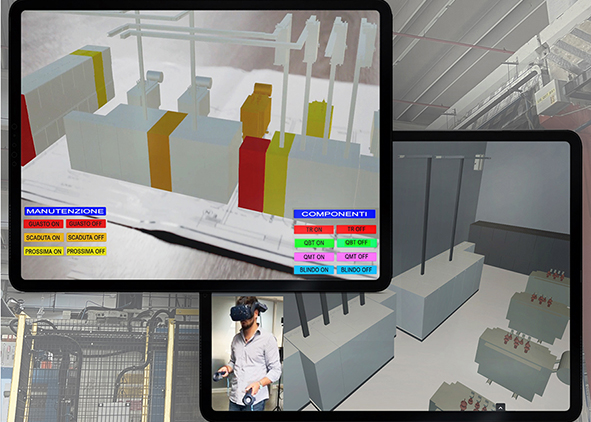
##submission.downloads##
Pubblicato
Come citare
Fascicolo
Sezione
Categorie
Licenza
Copyright (c) 2024 Anna Osello, Matteo Del Giudice, Angelo Juliano Donato, Andrea Fratto

TQuesto lavoro è fornito con la licenza Creative Commons Attribuzione 4.0 Internazionale.
AGATHÓN è pubblicata sotto la licenza Creative Commons Attribution License 4.0 (CC-BY).
License scheme | Legal code
Questa licenza consente a chiunque di:
Condividere: riprodurre, distribuire, comunicare al pubblico, esporre in pubblico, rappresentare, eseguire e recitare questo materiale con qualsiasi mezzo e formato.
Modificare: remixare, trasformare il materiale e basarti su di esso per le tue opere per qualsiasi fine, anche commerciale.
Alle seguenti condizioni
Attribuzione: si deve riconoscere una menzione di paternità adeguata, fornire un link alla licenza e indicare se sono state effettuate delle modifiche; si può fare ciò in qualsiasi maniera ragionevole possibile, ma non con modalità tali da suggerire che il licenziante avalli l'utilizzatore o l'utilizzo del suo materiale.
Divieto di restrizioni aggiuntive: non si possono applicare termini legali o misure tecnologiche che impongano ad altri soggetti dei vincoli giuridici su quanto la licenza consente di fare.
Note
Non si è tenuti a rispettare i termini della licenza per quelle componenti del materiale che siano in pubblico dominio o nei casi in cui il nuovo utilizzo sia consentito da una eccezione o limitazione prevista dalla legge.
Non sono fornite garanzie. La licenza può non conferire tutte le autorizzazioni necessarie per l'utilizzo che ci si prefigge. Ad esempio, diritti di terzi come i diritti all'immagine, alla riservatezza e i diritti morali potrebbero restringere gli usi del materiale.






